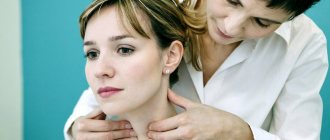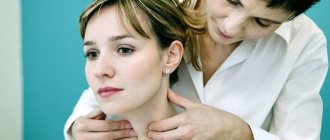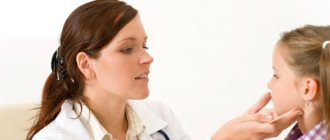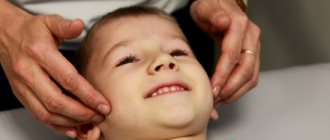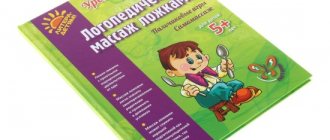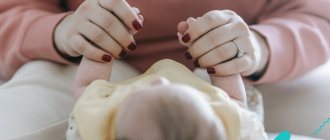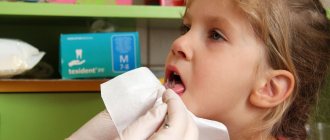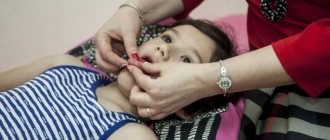The first sounds can be heard from babies at two months, and by the end of the first year of life, children can confidently pronounce syllables and whole words. However, it happens that kids lag behind their peers. The development of the speech apparatus is lame. To cope with this scourge, you should consult a doctor and regularly perform logomassage for children.
Even the most serious speech defects can be eliminated if you regularly perform speech therapy massage of the tongue.
Types of tongue massage?
Tongue massage can be done manually. Manual speech therapy massage is performed by a speech therapist using the fingertips. Manual speech therapy massage is both an independent stage of tongue massage and can be a preparatory stage for the second type of speech therapy massage - probe massage of the tongue.
The second type of speech therapy massage is probe massage. Probe speech therapy massage is performed with special speech therapy probes. Speech therapy probes are special “sticks” that have different shapes to influence different structures of the oral cavity. Speech therapy probe massage is deeper than manual tongue massage. In some cases, a specialist may replace the probe with a toothbrush or other device. The main thing is that the specialist clearly understands what he wants to achieve!
Facial massage for dysarthria
To simulate muscles in patients suffering from dysarthria, the following techniques are used:
- Stroking and kneading the forehead. The speech therapist stands to the right of the person being massaged and moves his kneading right hand in a zigzag manner across the forehead from the nose to the beginning of the hair. With a light stroking motion, moves the left hand along the forehead from the frontal tuberosity to the temple;
- Kneading the nose. The speech therapist uses the palmar surface of the terminal phalanges of the thumb and index fingers of the right hand to make a slightly vibrating zigzag movement from the end of the nose to its base and to the sides along the wings of the nose, and at this time supports the back of the head with his left hand;
- Kneading the zygomatic area. The speech therapist moves a weakly clenched hand across the face of the person being massaged from the midline outward and at the same time upward from the lower jaw to the cheekbones to the lower eyelid. If the technique is performed on the right side of the face, the speech therapist is located to the right of the patient. The massage is performed with the thumb and forefinger bent at a right angle. The movement is directed from the lower jaw and ear through the cheek bones to the lower eyelid.
To smooth the frontal muscles, the speech therapist stands behind and strokes the index and middle fingers of both hands across the forehead from its midline to the temporal region. Facial vibration is performed according to the following algorithm:
- The speech therapist stands behind;
- Four fingers of both hands, except the thumbs, are located between the cheek bones and the lower jaw;
- Makes frequent oscillating movements back and forth;
- After several such movements on one part of the face, he moves his hands to another part.
To smooth out the muscles between the lip and chin, the speech therapist stands on the right. With two thumbs, he strokes under the lower lip, continuing the movement to the ascending branch of the lower jaw.
Who does tongue massage? Who has special knowledge for this?
Despite the fact that the word massage implies the participation of a massage therapist in the process, in the case of speech therapy massage this is not the case! Speech therapists provide speech therapy massage! But not all speech therapists are ready and able to perform massage. Typically, a speech therapist who has gained experience and understands that many problems cannot be solved without speech therapy massage receives additional education on the topic of “speech therapy massage.” After training and receiving a special document, a speech therapist is considered a tongue massage specialist.
It should be added that you can do tongue massage yourself, for example, when a mother does basic techniques to her child. But all the same, it is better to entrust the appointment of massage and control over its effectiveness to an experienced speech therapist-myofunctional therapist! What distinguishes a simple speech therapist from a speech therapist-myofunctional therapist is that the latter understands in more detail and is able to work with the muscles of the articulatory apparatus and masticatory organ.
Contraindicated for whom
Massage is contraindicated for the following diseases:
- acute inflammatory processes in the oral cavity: viral diseases (herpes), rash caused by bacterial infection, gingivitis, etc.;
- enlargement of the submandibular lymph nodes;
- acute infectious disease;
- high body temperature;
- symptomatic epilepsy;
- intracranial hypertension.
Also, speech therapy massage is impossible in cases where the child, due to age or mental state, is unable to listen to the doctor, has a negative attitude towards his actions, and cannot sit still.
How is tongue massage done?
Tongue massage is carried out in a special speech therapy room. For example, a speech therapist’s office at a Family Dental Clinic looks like this:
Speech therapy massage is carried out in a relaxed state for the patient. This is usually lying down, reclining or sitting. If a tongue massage is performed on a small child, then the child sits on the mother’s lap. A tongue massage takes about 15 minutes. It is usually perceived positively by patients because it does not cause negative or painful conditions. The specialist performs a tongue massage wearing special disposable gloves. Massage probes are sterilized after each patient! This is an advantageous difference between medical and other organizations where tongue massage can be performed, for example, kindergarten, etc. In institutions of this type, such as kindergartens, speech therapists are not provided with either gloves or sterilizers. Therefore, they massage with bare hands and wipe the probes with alcohol. This, from our point of view, is not enough to ensure patient safety!
III. Features of logomassage for children at home
Where to get a massage, at home or in a clinic? Choose a place where your child will feel more comfortable. Some children go through the procedure better, find themselves in new conditions - they calm down and succumb to the doctor’s hypnosis. Other children love the familiarity of home, but behave restlessly in the clinic. Of course, the mother should be next to the baby to relieve his anxiety.
Logomassage is best done in a ventilated room. If you are going to massage your child’s mouth, make sure you wear gloves and a protective mask. All spoons, probes and other instruments used must be thoroughly washed and doused with boiling water.
Before the procedure, hands should be treated with a solution containing alcohol.
The child should feel well during the procedure, so it should not be done before bed or immediately after eating. Sessions don't have to be long.
Place your baby on the bed and place a pillow under his head or sit him in a chair. The main thing is that the child relaxes and nothing prevents him from breathing freely. A few words of encouragement wouldn't hurt.
Session duration depending on age:
- children under 2-3 years old – up to 8-10 minutes;
- preschool children – up to 17-20 minutes;
- from 7 years – up to 26-30 min.
Sessions can be repeated no more than three times a week. A sufficient course may include from 10 to 15 sessions.
Don't self-medicate! Before performing a massage at home, consult a specialist. The doctor should draw up a plan and show you the most appropriate massage movements for your child.
During the session, do not forget to talk to your child so that he does not get bored. You can tell your baby a fairy tale or play some nice music. You can sing the song yourself.
Now let’s look at specific logomassage techniques for children.
Who is tongue massage recommended for?
Tongue massage can be both stimulating and relaxing. And also combined, when one area of the tongue needs to be relaxed and the other stimulated! This is where the indications for tongue massage come from. Speech therapy massage is indicated for patients:
- with speech impairments;
- disorders of chewing and swallowing function;
- with malocclusion;
- undergoing orthodontic treatment (bite correction and teeth straightening);
- undergoing orthopedic treatment (dental prosthetics);
- with a short frenulum of the tongue for the purpose of non-surgical stretching;
- with hypertonicity of the tongue and masticatory muscles (bruxists and claunchers - people who clench and grind their teeth);
- with increased stress on the speech apparatus (teachers, lecturers, etc.).
Massage techniques to stimulate paretic muscles
Speech therapy massage for paretic syndrome is carried out to strengthen the muscles. Movements should be carried out intensively, with pressure. Rubbing, kneading, pinching are used. Forehead massage is performed to strengthen and stimulate the frontal muscles. Using the index, middle and ring fingers of both hands, stroke the forehead from the middle to the temples. Massage movements are done 6–8 times, 2–3 times a day. The following exercise is performed with the second phalanges of the index, middle and ring fingers clenched into a fist. Kneading movements are performed 6-8 times twice a day.
Rubbing the forehead from the middle to the temples is carried out with the first phalanges of the index, middle and ring fingers. When rubbed, the skin of the forehead is pulled tight. Rubbing movements are performed 4–6 times, twice a day. Strengthening and stimulating the frontal muscles can be done using spiral movements from the middle of the forehead to the temples. They are performed with the pads of the index, middle and ring fingers of both hands 4–6 times, 1 time per day.
Cheek massage is carried out by stroking, rubbing, kneading the cheek muscles. Kneading and rubbing the cheeks is carried out with both hands in the direction from the nose to the cheeks twice a day for 6-8 seconds. To stimulate the muscles that lift the angle of the mouth, the index, middle and ring fingers of both hands perform counterclockwise rotational stroking movements on the surface of the cheeks twice a day 8-10 times.
Activation of the muscles that lift the mandible is carried out using spiral rubbing of the masticatory muscle from the temples to the corners of the jaw. The movements are performed with the pads of the index, middle and ring fingers of both hands in a spiral 8–10 times, 2–3 times a day.
To strengthen and activate the muscles that lift the corner of the mouth and upper lip, pinching the cheeks is performed. Pinching movements are made with the index, middle and thumbs of both hands in a circle counterclockwise. Acupressure massage stimulates paretic muscles in dysarthria.
Speech therapy massage and dentistry! What's the connection? And what do we use in Dial-Dent?
People with malocclusion and uneven teeth almost always have improper and unbalanced functioning of the muscles of the tongue, lips, chewing muscles and other muscles of the masticatory organ. Moreover, the modern concept of the causes of the formation of bite defects suggests that most dental defects are caused by improperly working muscles. Incorrect speech, improper functioning of the tongue when swallowing and chewing, asymmetrical pressure of the tongue - all this leads to the fact that the teeth can move in different directions under certain conditions. This is how a deformation of the bite occurs, which is more pronounced the more incorrectly the tongue and other muscles work.
Most orthodontists, without delving into the work of muscles and without consulting with speech therapists, install braces or aligners and straighten the teeth without taking into account the condition of the muscles. This approach is outdated and almost always leads to relapse, when the teeth become crooked again some time after treatment. Knowing this, older orthodontists force their patients to wear retainers. Retainers are structures that keep teeth aligned. This could be a wire glued to the teeth or a plastic mouthguard to wear at night.
At Dial-Dent, we always take into account the muscular cause of malocclusion. The participation of a speech therapist in the diagnosis and in the process of straightening teeth makes it possible to remove or correct the myofunctional causes of deformities. This interdisciplinary approach is more modern and gives the best and most stable treatment results! After treatment, relapses do not occur because muscle balances are leveled. Accordingly, the orthodontic treatment itself occurs faster and without problems with the participation of a speech therapist-myofunctional therapist.
Important rules of logomassage
Articulation massage for dysarthria is undoubtedly an effective method of correction. To benefit and avoid complications, the following conditions must be met:
- All stages of treatment are controlled by a speech therapist: drug treatment, physiotherapy, massage. Therefore, choosing a specialist is one of the fundamental moments in therapy;
- In addition to professional qualities, it is important to establish emotional contact between the speech therapist and the child. This means that a specialist must be able to find a common language with children of different ages. If the child behaves awkwardly and starts throwing tantrums during sessions, there will be no benefit from such procedures, no matter what credentials the speech therapist has;
- The room in which a relaxing massage for dysarthria is performed should be comfortable. It is necessary to ventilate it, remove distracting objects;
- It is better to do the procedures while lying down. But if the child is so uncomfortable, he can sit down;
- The child should be in a good mood, well-fed and happy. Treatment cannot be carried out when he is tired, emotionally overworked or sick. During the massage he should not experience discomfort or pain;
- Your mood is also important. If you are excited and nervous, the baby will feel it and will also begin to worry;
- If you use a spoon or brush, purchase them specifically for massage;
- The sooner you start therapy, the faster you will get results. Therefore, pay attention to the child’s speech, especially if he is at risk: your pregnancy and childbirth were difficult, you were sick during pregnancy, the child had a traumatic brain injury, he was seriously ill for a long time, you have close relatives with speech problems. disorders. The first “bells” are limited mobility of the lips, palate, tongue, difficulties with sucking and swallowing food. Nasal and slurred speech when the child begins to talk. If you notice these symptoms, consult your doctor;
- The procedures will be effective only with an integrated approach. This means that at the same time lessons are held with a speech therapist on sound production, breathing exercises, and the development of fine motor skills.
Be patient. Lead a normal life: let your baby feel that he is no different from the rest, that he is also loved and appreciated. This is an important point that will undoubtedly help him cope with his problems.
Cost of tongue massage at Dial-Dent. Specialist in speech therapy massage.
At the Family Dental Tongue Massage or speech therapy massage, speech therapist-myofunctional therapist Tatyana Borisovna Tsukor is engaged. Graduated from Moscow Pedagogical State University. Lenin. Work experience more than 15 years. Speech therapist teacher of the highest qualification category. Laureate of the competitions “Heart given to children 2008” and “Heart given to children 2010”.
The cost of a session with a speech therapist is 3,500 rubles. The duration of the session is from 30 minutes to 50 minutes depending on the task and the age of the patient. If necessary, the session also includes speech therapy massage.
Being a unique speech therapist who has been collaborating with dentists for a long time and successfully, Tsukor T.B. conducts training courses for both orthodontists and speech therapists. The course covers all aspects of speech therapy massage. Of course, every orthodontist should know about the capabilities of such a powerful tool as speech therapy massage. Training is carried out both as part of presentations at congresses, and individually or in small groups.
Our speech therapist also conducts classes via Skype. The cost of such a lesson is 2500 rubles. As you understand, speech therapy massage cannot be done via Skype, so if you need a massage, you will still have to come to Dial-Dent.
You can make an appointment with the Family Dental speech therapist Tatyana Borisovna Tsukor by calling the clinic +7-499-110-18-01 or using the form on the website. You can ask questions about speech therapy, as well as massage training, to T.B. Zukor on her page in.
Conditions for holding
Speech therapy massage for children, as a rule, begins at the age of 4–5 years. According to indications, the course can be started earlier.
You need to create favorable conditions at home so that the sessions do not bring discomfort. The room should be quiet, warm and light. The massager's hands should be warm and clean. Make sure there are no scratches, inflammation, or foreign odors on your hand—perfume, aromatic oils, creams. Remove all jewelry. It is also necessary that the child is disposed to treatment and treats it calmly. It is unacceptable for the baby to cry and struggle.
The first speech therapy massage procedure for children can be short - no more than 5 minutes, especially if this is the first time for him. Then gradually increase the duration: after a week you can practice for 20–30 minutes. Focus on the age and reaction of the baby: if he becomes uncomfortable, uncomfortable, fear or nervous tension appears, it is better to interrupt the session. If you continue, despite the protest, next time he may refuse treatment altogether.
For good results, you need to practice regularly. Optimally 2 – 3 procedures per week. If you combine them with articulatory gymnastics and other activities, you will see the effect faster. Try not to take long breaks between sessions.
On average, a full course requires 10–20 sessions, sometimes more.
For massage you need to prepare a special oil or cream. Be sure to check for tolerance: apply a small amount of the product to the skin of your forearm and evaluate the reaction.
After treatment, wash your baby's face and rinse his mouth.
